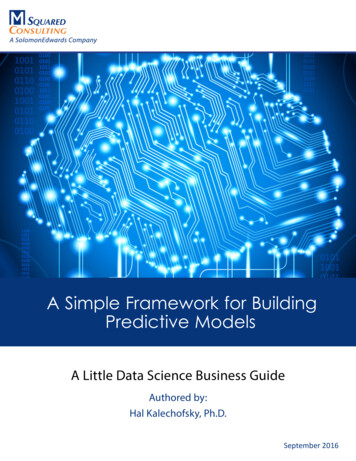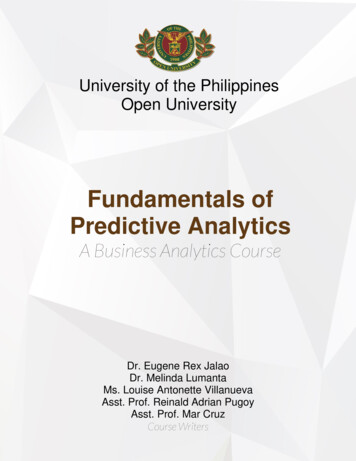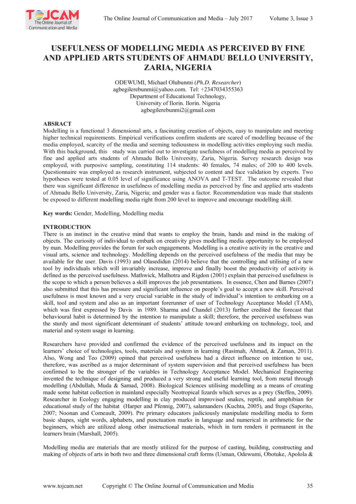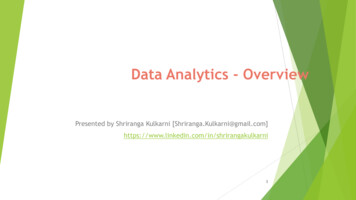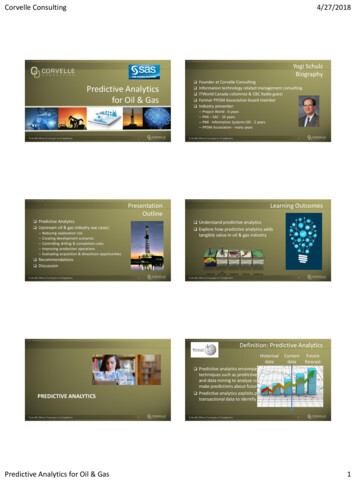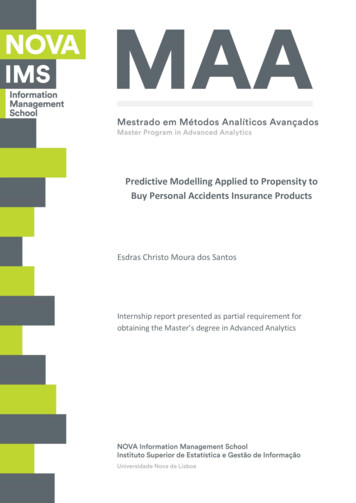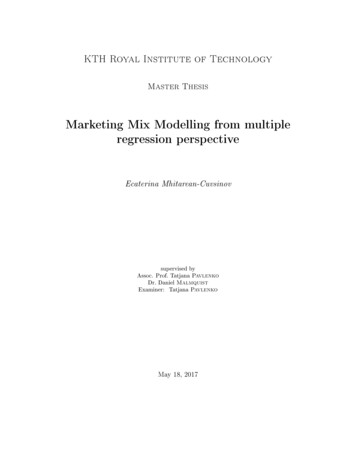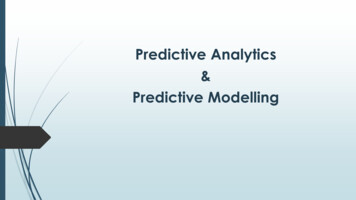
Transcription
Predictive Analytics&Predictive Modelling
What is Predictive Modelling Predictive analytics is the branch of the advanced analytics whichis used to make predictions about unknown future events. Predictiveanalytics uses many techniques from data mining, statistics,modeling, machine learning, and artificial intelligence to analyzecurrent data to make predictions about future. Predictive modeling is a process used in predictive analytics tocreate a statistical model of future behavior. Predictive analytics isthe area of data mining concerned with forecasting probabilitiesand trends.
Predictive Analytics Process
Business process and features on PredictiveModelling Business process on Predicting modelling Creating the model Testing the model Validating the model Evaluating the model Features in Predicting modelling Data analysis and manipulation Visualization Statistics Hypothesis testing
How the model work In predictive modeling, data is collected for the relevant predictors,a statistical model is formulated, predictions are made and themodel is validated (or revised) as additional data becomesavailable. The model may employ a simple linear equation or acomplex neural network, mapped out by sophisticated software.
How the model work(cont.) Here you will learn what a predictive model is, and how, by actively guidingmarketing campaigns, it constitutes a key form of business intelligence. we'lltake a look inside to see how a model works1. Predictors Rank Your Customers to Guide Your Marketing2. Combined Predictors Means Smarter Rankings3. The Computer Makes Your Model from Your Customer Data4. A Simple Curve Shows How Well Your Model Works5. Conclusions
Why Predictive ModellingNearly every business in competitive markets will eventually need to dopredictive modeling to remain ahead of the curve. Predicting Modeling (alsoknown as Predictive Analytics) is the process of automatically detectingpatterns in data, then using those patterns to foretell some event. Predictivemodels are commonly built to predict: Customer Relationship Management the chance a prospect will respond to an ad Mail recipients likely to buy when a customer is likely to churn if a person is likely to get sick Portfolio or Product Prediction Risk Management & Pricing
Some Predictive ModelsIdeally, these techniques are widely used: Linear regression Logistic regression Regression with regularization Neural networks Support vector machines Naive Bayes models K-nearest-neighbors classification Decision trees Ensembles of trees Gradient boosting
Applications of Predictive Modelling Analytical customer relationship management (CRM) Health Care Collection Analytics Cross-cell Fraud detection Risk management Industry ApplicationsPredictive modelling are used in insurance, banking, marketing,financial services, telecommunications, retail, travel, healthcare, oil &gas and other industries.
Predictive Models in Retail industry Campaign Response Model – this model predicts thelikelihood that a customer responds to a specific campaign bypurchasing a products solicited in the campaign. The modelalso predicts the amount of the purchase given response. Regression models Customer Segmentation Cross-Sell and Upsell New Product Recommendation Customer Retention/Loyalty/Churn Inventory Management
Predictive Models in Telecom industry Campaign analytics Churn modeling Cross-selling and up-selling Customer lifetime value analytics Customer segmentation Fraud analytics Marketing spend optimization Network optimization Price optimization Sales territory optimization
Predictive Analytics Software SAS Analytics R STATISTICA IBM Predictive Analytics MATLAB Minitab
Thank you
Predictive analytics uses many techniques from data mining, statistics, modeling, machine learning, and artificial intelligence to analyze current data to make predictions about future. Predictive modeling is a process used in predictive analytics to create a statistical model of future behavior. Predictive analytics is

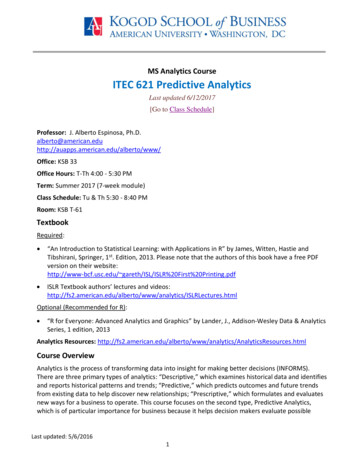
![Index [beckassets.blob.core.windows ]](/img/66/30639857-1119689333-14.jpg)
